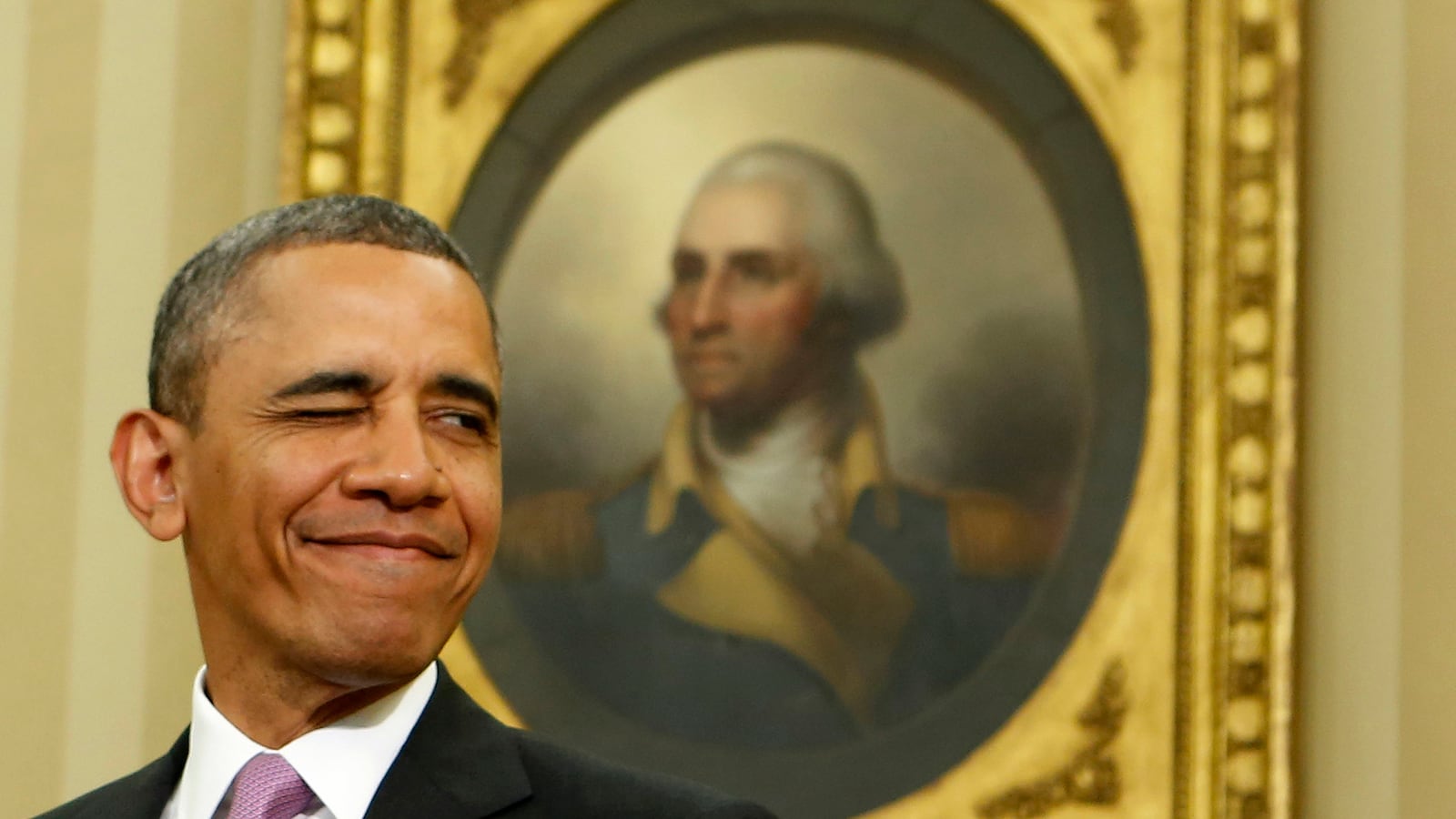Old show-biz joke:“Ask me the secret of great comedy.”“Okay…what’s the secret of great com—“—Timing!”
Here lies one of the most significant weights that have burdened the presidency of Barack Obama. Apart from his personal and policy strengths and weaknesses, he has been the victim of bad timing quite literally from the moment he took the oath of office.
At first glance, this may seem like an absurd notion about someone who went from a state senate seat in Illinois to the Presidency in four years. (Only Grover Cleveland, who went from Mayor of Buffalo to Governor of New York to the White House in three years had a sharper trajectory.) And indeed, if we’re looking at Barack Obama as a candidate, timing has been his friend. The global financial meltdown in September 2008, wiped out whatever (slim) chance John McCain had of defeating Obama. Four years later, the still-sluggish economy was improving just enough to aid him in his fight for a second term.
Viewed from the perspective of Obama’s presidency, however, timing has been far more his foe than friend. And the best way to understand this is to contrast the start of his tenure with that of the last President to take office in the middle of a financial crisis.
The Great Depression began with the stock market crash of October 1929—less than eight months into Herbert Hoover’s Presidency (inaugurations back then were held in March, not January). By the time Franklin Roosevelt was elected, the United States had been on the ropes for three years; and the picture grew even worse in the four months between FDR’s election and his 1933 inauguration.
Between bank failures, rising unrest in the heartland, and a jobless rate that put one in four Americans out of work, the country was prepared to give Roosevelt something close to carte blanche; for some, like publishing mogul William Randolph Hearst, that included near-dictatorial power. Hearst helped finance a film that came out on the eve of FDR’s inauguration, Gabriel Over The White House, which portrayed a divinely inspired President shutting down Congress and ruing by martial law.
Now look at the terrain that greeted Obama post-election. The massive financial bailout launched by President Bush and Treasury Secretary Henry Paulson may have averted a complete collapse, but could not stop the massive impact of the Great Recession. The 432,000 job loss of September became an 803,000 job loss in November, and the month Obama was inaugurated saw the single biggest one-month job loss of all: 818,000. By the time 2009 was over, 4.7 million American jobs had been lost; and, measured strictly (and highly misleadingly) by the calendar, they almost all came “on Barack Obama’s watch.”
Unlike FDR, Obama could not point to a three and a half year stretch of wretched economic news that preceded his taking power; the stretch that had given Roosevelt so much of a free hand as well as an electorate that fully understood how long it would take to recover. With a jobless rate over 21 per cent in 1934, Democrats still gained seats in the mid term elections; it was nearly 17 percent in 1936, when FDR swept to a 46-state landslide re-election.
The Great Recession statistically ended in June 2009; by the fall of 2010, more jobs were being created than lost. But the tortoise-like pace of the recovery—a pace common to financially-triggered recessions—helped cost Obama’s party the House of Representatives in the 2010 midterms.
Bad timing was a key to the Democratic disaster of 2014 as well. And that’s best seen by what happened after they lost the Senate, dropped to their lowest House totals since Herbert Hoover, and found themselves out of power in the great majority of states. It was after November that good news began showing up: huge jumps in new jobs, a jobless rate under 6 percent, 10 million more Americans covered by health insurance—and an Obamacare web site that was working well. Had those conditions emerged in, say, January of 2014, Democrats might have found themselves able to articulate an effective political message rather than cowering a defensive crouch for most of last year.
Finally, it was timing that undermined whatever “populist” message Obama might have offered. In 2009, with Democrats (and independent allies) holding 60 Senate seats and 255 House seats, the moribund U.S. economy made it politically impossible to advocate tax hikes even on the wealthy. Now, with an accelerating economic recovery making such an idea plausible, Democrats find themselves with 46 Senate seats and 188 House seats —their lowest total since Herbert Hoover’s Presidency. A populist tax program may make for a good political argument, but as a legislative possibility, it ranks in the “snowball’s chance in hell” category.
No one need feel sorry for Obama; at least some of the headwinds he faced in his first term were of his own making, including the selection of top economic advisors who far more in sync with Wall Street than Main Street. Moreover, he’s far from the only President who suffered the afflictions of bad timing. Think of Jimmy Carter facing a second oil embargo and hyper-inflation just as the 1980 campaign was getting underway, or George H.W. Bush confronting a damaging Independent Counsel’s report on the eve of his re-election.
But it’s useful to remember that, just as in comedy, part of the secret of a successful Presidential term is something as simple as tim—






